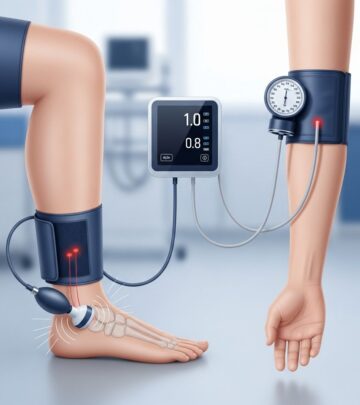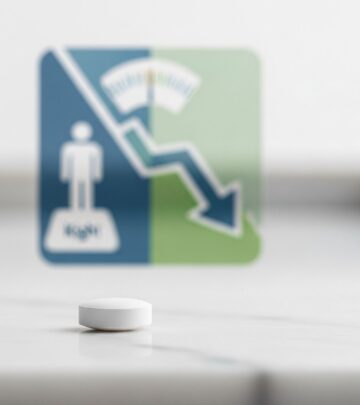How to Heal Cracked Heels: Effective At-Home Treatments & Prevention
Discover expert tips on treating and preventing cracked heels using proven at-home remedies and healthy lifestyle practices.

Cracked heels, also known as heel fissures, are a common nuisance that can range from a minor cosmetic concern to a painful, persistent condition. If left untreated, they can lead to deeper fissures and risk serious infections. Fortunately, with proper at-home care and preventive measures, most cases of cracked heels can be successfully managed and healed.
What Causes Cracked Heels?
The skin on your heels is particularly sensitive to dryness and pressure. Cracks usually develop when the skin around the rim of the heel thickens, becomes dry and loses its elasticity. Everyday activities—such as standing for long periods, walking barefoot, or wearing open-heeled shoes—increase pressure on the heel’s fat pad. When the skin is dry or inflexible, it splits under this pressure, resulting in painful fissures.
- Dry skin: Most commonly caused by environmental factors, low humidity, or harsh soaps.
- Obesity: Puts additional pressure on the heel’s fat pad, risking fissures.
- Footwear: Open-heel shoes (like sandals), shoes with poor support, or shoes that rub at the heel worsen dryness and cracking.
- Prolonged standing: Especially on hard floors, which increases strain on the heel area.
- Medical conditions: Diabetes, eczema, psoriasis, and thyroid problems can all contribute to severely dry or cracked skin on the heels.
- Age: Older adults are more susceptible as skin loses moisture and elasticity.
Recognizing the Symptoms
Cracked heels can present with a variety of symptoms, usually starting with dry, thickened, and callused skin along the heel edge. Progression may include:
- Visible cracks or fissures
- Pain or discomfort (especially while walking or standing)
- Itching and flaking
- Bleeding (if cracks deepen)
- Swelling, redness, or signs of infection (in severe cases)
At-Home Treatments for Cracked Heels
Most cases of cracked heels respond well to self-care treatments performed at home. Consistency and gentle care are key for best results.
Step-By-Step Care Routine
- Moisturize Frequently
- Apply a thick, emollient moisturizer (such as Eucerin, Cetaphil, or other similar brands) to your heels at least twice a day.
- Some moisturizers contain keratolytic agents like urea, salicylic acid, or alpha hydroxy acids that facilitate exfoliation and softening of rough skin.
- Be aware: Keratolytic creams may cause mild stinging or irritation. Use sparingly, no more than twice daily, unless directed by a physician.
- Night Time Intensive Treatment
- Soak your feet in warm, plain, or soapy water for about 10 620 minutes to soften skin.
- Pat feet dry, and while the skin is still slightly damp, gently rub your heels with a loofah, pumice stone, or foot scrubber to slough off dead skin.
- Immediately apply a heavy, oil-based cream or petroleum jelly (such as Vaseline or Aquaphor Healing Ointment).
- Slip on thin cotton socks to help lock in moisture overnight and further soften skin by morning.
- Protect the Heels
- If cracks are deep, consider using a liquid bandage or skin glue to help seal fissures and protect them as they heal.
- Use protective or cushioning pads if weight-bearing is painful.
Product Ingredients to Look For
| Ingredient | Purpose |
|---|---|
| Urea | Hydrates and exfoliates thickened skin |
| Salicylic Acid | Keratolytic: softens and loosens dead skin |
| Alpha Hydroxy Acids | Promotes mild chemical exfoliation and smoothness |
| Petroleum Jelly | Forms an occlusive layer to trap in moisture |
| Lanolin | Deep hydration and emollient effect |
Do’s and Don’ts for Self-Care
- Do moisturize at least twice daily, preferably after bathing and before bedtime.
- Do use gentle exfoliation to remove callused, hardened skin—never use sharp blades.
- Do wear supportive, closed-toe shoes and socks during the day to reduce friction and protect your heels.
- Don’t attempt to cut or shave off thickened skin, as this can worsen cracks or cause injury.
- Don’t ignore persistent cracks that bleed, show signs of infection, or do not respond to home care.
Additional Prevention Tips
Adopting proactive foot care habits can dramatically reduce the recurrence of cracked heels and maintain smooth, healthy skin.
- Avoid prolonged exposure to hot showers, soaking, or harsh soaps, which strip skin of natural oils.
- Always dry feet thoroughly after bathing, particularly between the toes and around the heels.
- Apply moisturizer immediately after bathing to maximize water retention in the skin.
- Wear properly fitting, closed-toe shoes when walking outside or on hard surfaces.
- Avoid going barefoot or wearing sandals that leave heels unprotected for long periods.
- Consider using a humidifier at home during cold, dry months to increase air moisture and protect skin from excessive drying.
- Maintain a healthy weight to reduce the pressure placed on your heels with every step.
Risk Factors for Cracked Heels
- Obesity or sudden weight gain
- Open-backed shoes or sandals
- Standing for long stretches (work-related, etc.)
- Skin conditions (eczema, psoriasis, athlete’s foot)
- Peripheral neuropathy or poor circulation (especially in people with diabetes)
- Advancing age
- Cold, dry environmental conditions
When to Seek Medical Attention
While cracked heels usually improve with at-home care, some situations require professional evaluation and treatment:
- Severe pain, bleeding, or deep fissures
- Swelling, redness, discharge, or signs of infection
- No improvement after several weeks of consistent self-care
- Underlying health conditions (such as diabetes, eczema, psoriasis, or poor circulation)
Your healthcare provider may recommend:
- Prescription-strength emollients or topical steroid creams for inflammation
- Adhesive strapping or special bandages to hold cracks together as they heal
- Debridement (professional removal of thickened or callused skin, never attempted at home)
- Treatment and management of any underlying conditions contributing to heel fissures
Special Considerations for People with Diabetes
If you have diabetes, you are at heightened risk for foot complications due to reduced sensation and decreased blood flow. Untreated cracks can lead to dangerous infections and ulcers. If you notice any cracks, open sores, or signs of infection, seek medical attention promptly. Regular foot exams and careful monitoring are essential.
Frequently Asked Questions (FAQs)
Q: Is it safe to remove the thick skin on my heels?
Yes, gentle exfoliation using a loofah, pumice stone, or foot scrubber is generally safe, provided you do not overdo it. Never use razors or sharp instruments, as they can cause injury or infection.
Q: What kind of moisturizer should I use for cracked heels?
Opt for thick, oil-based creams or ointments that form a barrier and trap moisture in your skin. Look for products containing urea, salicylic acid, or alpha hydroxy acids for enhanced exfoliation.
Q: How long does it take for cracked heels to heal with home treatment?
With consistent, daily care, most mild-to-moderate cases of cracked heels improve within one to two weeks. Deeper fissures or complications may require several weeks or medical intervention.
Q: What should I do if self-care doesn’t help?
If cracks persist despite dedicated home efforts or worsen, especially if you see bleeding, redness, or swelling, consult a healthcare professional for advanced treatment options.
Q: Are there any home remedies that work?
Common home remedies such as olive oil, coconut oil, or honey are popular but not proven to be more effective than medical-grade occlusive ointments. For best results, use clinically recommended moisturizers and follow expert-recommended routines.
Summary Table: Self-Care Steps for Cracked Heels
| Step | Details |
|---|---|
| Moisturize | Use a thick, emollient cream at least twice daily |
| Soak & Exfoliate | Nightly foot soak (10 620 min), gentle removal of dead skin |
| Seal in Moisture | Apply petroleum jelly or oil-based ointment before bed, wear socks |
| Footwear | Choose supportive, closed-toe shoes and wear socks |
| Prevent | Monitor conditions, optimize home humidity, avoid long hot showers |
Further Resources
- Mayo Clinic Health Letter for regular tips on managing dry and cracked skin
- Consult a podiatrist if you are living with diabetes or persistent foot problems
- Talk to a dermatologist if you have underlying skin conditions such as eczema or psoriasis
References
- Adapted from Mayo Clinic sources
- Lawrence E. Gibson, M.D., Dermatology, Mayo Clinic, Rochester, Minn.
Read full bio of medha deb












